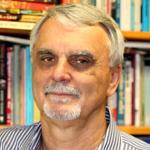
Did Jesus go to India? Was he taught by Hindu and Buddhist sages? There are many who are convinced that between the ages of 12-29, Jesus travelled.
These sorts of claims are presented in the film The Lost Years of Jesus. They are also made in Shirley Maclaine’s Out on a Limb, Janet Bock’s The Jesus Mystery, Elizabeth Clare Prophet’s The Lost Years of Jesus and Holger Kirsten’s Jesus Lived in India. Edgar Cayce the trance medium, Bhagwan Shree Rajneesh and Sai Baba have also claimed that Jesus went to India.
The Life of St Issa
The claim that Jesus spent his missing years in India originated with Nicholas Notovitch’s The Unknown Life of Jesus Christ in 1894 Notovitch, a Russian journalist, claimed he had found documents in a Tibetan Buddhist monastery which described Jesus’ life.
In these scrolls Jesus was known as St Issa. At the age of 12 he left Jerusalem for India where he studied the Vedas. He was welcomed by the outcasts for his wisdom and miracles but the Brahman priests grew jealous and sent St Issa away. He journeyed to Kashmir and Tibet. In Tibet he mastered the Buddhist Scriptures and then returned to Palestine to preach.
Do these scrolls exist? Janet Bock concedes:
Of course, the truth about the missing years in Jesus’ life cannot be historically proven and therefore will always be subjective for each individual who explores it, which is the way it should be. We have no need to prove anything about this story (p.5).
Since she admits there is no historical evidence to support these claims it seems presumptuous of her and others to attribute to Jesus things he neither said nor did. Surely what Jesus really said and did is more significant than the presentation of what these writers want Jesus to say. The real Jesus is preferable to the fictitious one.
St Issa The Buddhist
According to Notovitch, Jesus mastered Buddhism whilst living in Tibet. The big problem with this is the fact that Buddhism did not reach Tibet until the 7th century AD. Buddhist author Christmas Humphreys states in his book Buddhism (Penguin 1962):
Before the seventh century the sole religion of Tibet was the Bön... Sometime in the fifth century AD a number of Buddhist books were brought into Tibet from India, but they seem to have been ignored, and it was not until the reign of King Srongstsen Gampo in the middle of the seventh century, that Buddhism became a force in Tibet (pp. 190,191).
In The Elements of Buddhism John Swelling himself a committed Buddhist, notes; We can trace two principal transmissions of Buddhism to Tibet: an initial one begun during the seventh century CE and a second one starting around the year 1000. (pp33-34)
So the evidence shows that Jesus could hardly have been a student of Buddhism in Tibet in the first century AD. What must also be noted is that what St Isaa teaches bears almost no resemblance to Buddhist teachings.
In 1895 J.A. Douglas, a professor at Government College in Agra, India retraced Notovitcli’s steps to Tibet. He interviewed the Head Abbot at the Monastery where Notovitch claimed the scrolls were. Douglas obtained an affidavit from the Abbot denouncing Notovitch's story as a lie.
Douglas established there were no scrolls about St Issa or Jesus. He published his findings in the popular monthly journal The Nineteenth Century (The Chief Lama of Himis on the Alleged Unknown Life of Christ April 1896).
What about the New Testament?
The primary source of information for the life and teachings of Jesus is found in the four Gospels. Here one can apply basic historical tests concerning the authenticity and accuracy of the documents.
In contrast to Notovitch’s forgery, there are more than 5000 Greek manuscripts available for the four Gospels which can be compared to ascertain if the texts have been faithfully copied and recopied down the centuries. On this point, Sir Frederick Kenyon of the British Museum concluded:
The interval, then, between the dates of original composition and the earliest extant evidence becomes so small as to be in fact negligible, and the last foundation for any doubt that the Scriptures have come down to us substantially as they were written has now been removed.
Both the authenticity and the general integrity of the books of the New Testament may be regarded as finally established (The Bible and Archaeology pp. 288-289).
Another important fact is that the Gospels were written either by eyewitnesses to the events (Matthew, John) or by people who interviewed the eyewitnesses (Mark, Luke). J.A.T. Robinson in Redating the New Testament argued that all the New Testament books were in circulation before 70 AD that is within 40 years of the events.
The Gospels can also be tested by external evidences, such as the writings of non-Christians (Josephus, Tacitus, Suetonius and Pliny the Younger) and from archaeological findings. In all these respects the Gospels pass the critical tests for historical reliability.
Who is Jesus?
So what did Jesus say about himself? He claimed to be God in human flesh and rested the proof of his credentials on the fact that he would be put to death and rise again from the dead. The Gospels painstakingly present the evidence that Jesus was executed and then rose from the dead. Jesus taught that he alone was the Way, the Truth and the life. He did not say that God could be reached by following any other religious path. Jesus also made it plain that He alone was God and that we are not.
Jesus taught that we suffer from soul-sorrow which separates us from God and that the way to overcome this is to enter into a personal relationship with Him. We can do this by acknowledging out need of Jesus, by accepting that what he taught is the truth, believing that his death was on our behalf so that we may be forgiven of our soul-sorrow, and by trusting Jesus we can enjoy friendship with God forever.
The claim that Jesus went to India or Tibet and taught Hindu and Buddhist dogmas is a spiritual deception. Why settle for a fabrication when your journey in life can be enriched by meeting the real Jesus?

Rev Dr Ross Clifford AM is the Principal of Morling College (NSW Baptist) and author of numerous books many of which focus on Christian Apologetics. He is a Vice President of the Baptist World Alliance, President of the Asian Baptist Association, an acclaimed international preacher and speaker, a columnist in many Christian publications, winner of many national and international awards and for many years the Sunday evening Sydney Radio 2CH host. Ross is married to Bev, father and grand father.